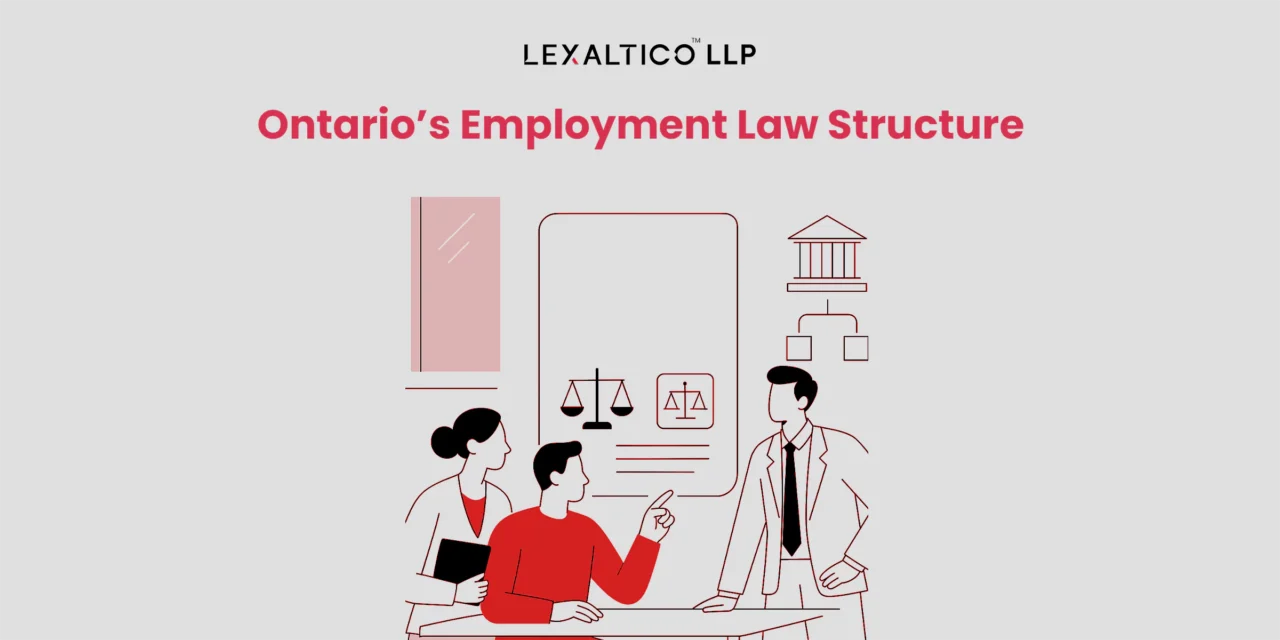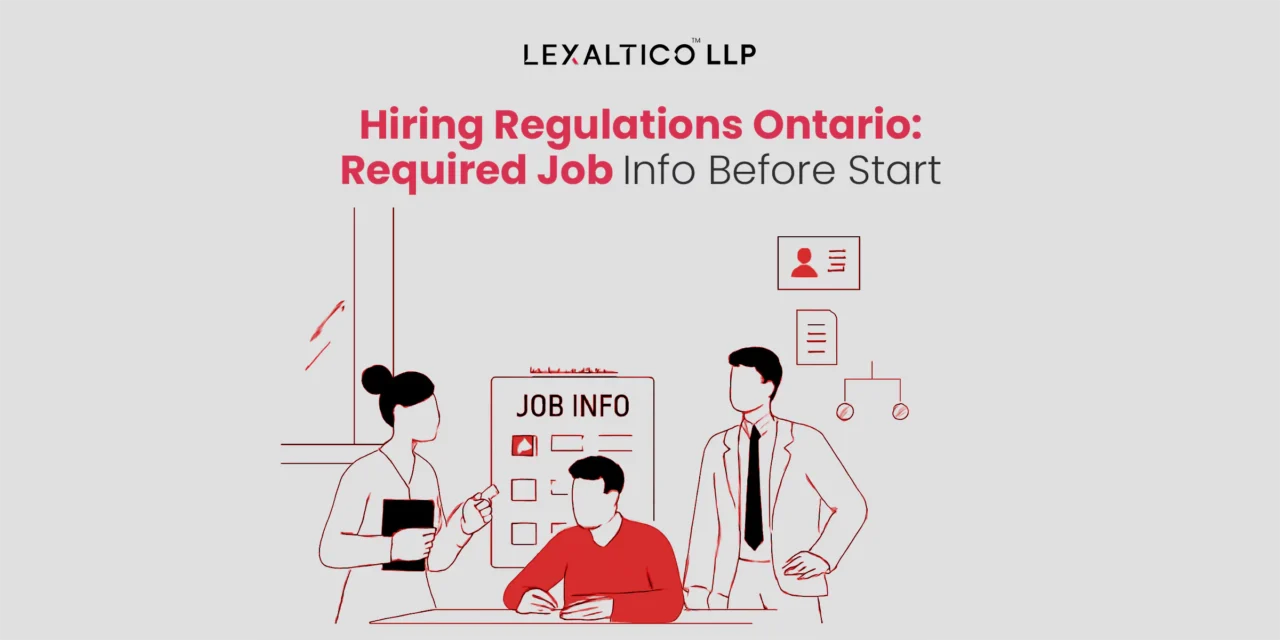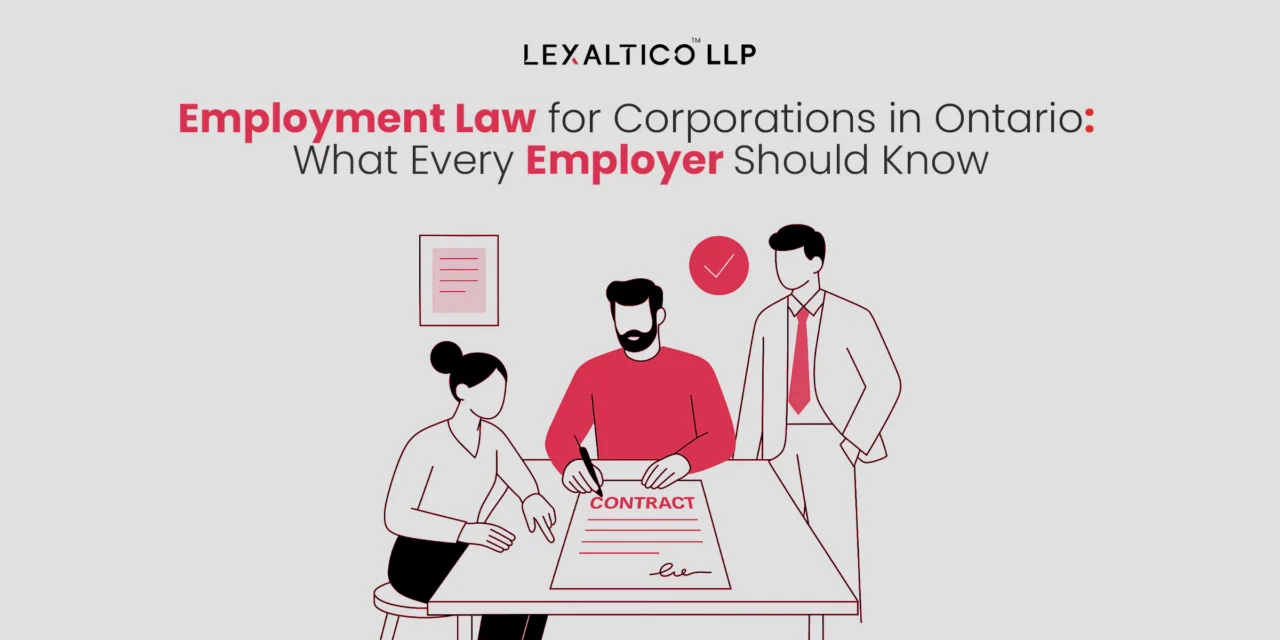Across Canada, employment law is changing. New updates at both the federal and provincial levels are shaping how people work. These changes affect employee rights and employer obligations. The goal is to adjust to the modern workplace and support fair practices.
While each province takes its own approach, many of the changes deal with similar issues. Provinces are responding to modern workplace needs through their own strategies, focusing on fairness, clarity, and enforcement.
What Ontario Employers Must Know About Employment Law
Employment Law Ontario: Digital Platform Workers’ Rights
Ontario introduced the Digital Platform Workers’ Rights Act to protect gig workers. This law starts on July 1, 2025, and applies to workers using online platforms like ride-sharing, delivery, and freelance services. The Act requires:
- Clear information about how pay is calculated, how work is assigned, and how performance is rated.
- Recurring pay periods and fixed paydays.
- Minimum wage for each job performed.
- Written explanation and two weeks’ notice before removal from a platform.
- All dispute resolutions must take place in Ontario.
- Operators must keep detailed records for three years after a worker is removed.
British Columbia is taking a different approach by classifying gig workers as employees under its existing labour laws.
Sick Leave and Healthcare Pressure
Ontario, Quebec, and Newfoundland and Labrador are making changes to reduce paperwork around short-term sick leave. Employers in these provinces can no longer request a doctor’s note for short absences.
This change reduces pressure on the healthcare system and supports employees who need time to recover from minor illnesses without needing to visit a doctor.
Workplace Harassment Policy in Ontario
Ontario has expanded the definition of workplace harassment under the Employment Standards Act (ESA). Now, it includes harassment through digital and online communication tools, such as email, messaging platforms, and video calls. It also extends protections to cover gender identity and gender expression.
Employers are also required to post harassment policy information in an electronic format that is easy for employees to access. These updates reflect the realities of hybrid and remote work environments and the increasing importance of virtual interactions.
Other provinces are taking similar steps. Quebec requires detailed policies and complaint procedures. Alberta has increased its focus on workplace violence prevention.
Psychological Safety in the Workplace Laws in Ontario
Some provinces, such as Quebec and Nova Scotia, are recognizing that safety at work includes psychological safety. Ontario already enforces this through the Occupational Health and Safety Act (OHSA), which requires employers to address psychological risks in the workplace.
These changes ensure that mental health is treated as an essential part of workplace safety compliance in Ontario.
Understanding Ontario’s Employment Law Structure

Ontario employers must follow provincial rules unless they operate in federally regulated sectors like banking, telecommunications, or interprovincial transport. About 94% of Canadian workers fall under provincial employment laws. Ontario’s employment laws are divided across multiple statutes:
- Employment Standards Act (ESA) – Sets out minimum standards for wages, hours, time off, and termination.
- Occupational Health and Safety Act (OHSA) – Requires safe working environments and training.
- Workplace Safety and Insurance Act (WSIA) – Covers insurance and compensation for workplace injuries.
- Labour Relations Act – Manages union-related issues and collective bargaining.
Employers must be familiar with how these laws interact to meet all legal requirements to hire staff in Ontario.
Federal Changes Under the Canada Labour Code (CLC)
Termination Laws Ontario Employers Should Note
The CLC now requires a graduated notice for employee termination:
- 3 months to 3 years of service: 2 weeks
- 3 years: 3 weeks
- 4 years: 4 weeks
- 5 years: 5 weeks
- 6 years: 6 weeks
- 7 years: 7 weeks
- 8 or more years: 8 weeks
This applies to federally regulated industries only.
Worker Misclassification: Independent Contractor vs Employee
The CLC now assumes that anyone receiving pay is an employee. If an employer claims someone is an independent contractor, they must prove it. Misclassifying workers can lead to serious consequences:
- Back pay for vacation, overtime, and holidays.
- Penalties under the CLC.
- Required CPP and EI contributions.
- Tax reassessments.
- Legal costs and employee claims.
Future Federal Changes Affecting Employers
No Replacement Workers During Strikes
From June 20, 2025, federally regulated employers cannot use replacement workers during a legal strike or lockout. Exceptions are limited to services that prevent immediate and serious danger. Penalties can be up to $100,000 per day.
New Leaves of Absence
- Pregnancy Loss Leave: Starting December 2025, up to 8 weeks of leave for stillbirths and 3 days for other pregnancy losses. The first 3 days are paid with 3 months of service.
- Adoption/Surrogacy Leave: Up to 16 weeks of unpaid leave. Date of enforcement to be announced.
Ontario Employment Standards Act (ESA) Updates 2025
Employer Obligations Ontario: What’s New
- Trial Periods as Training: Work done during trial periods is considered training and must be paid.
- Direct Deposit: Employees must choose the account for direct deposit. Employers cannot decide this.
- Vacation Pay Agreements in Writing: Any vacation pay arrangements outside standard methods must be documented.
- Expanded Workplace Harassment: Includes virtual harassment and gender-based protections.
- No Sick Note Requirement: Employers cannot ask for a medical certificate for ESA sick leave.
- Higher ESA Violation Fines: Maximum penalty is now $100,000 for individuals.
Hiring Regulations Ontario: Required Job Info Before Start

New Rule for Employers With 25+ Employees
From July 1, 2025, employers must give new hires this information before their first day or as soon as possible:
- Employer’s legal and operating names
- Contact information
- Job location description
- Starting wage or commission
- Pay period and payday
- Expected hours of work
This helps set clear expectations and ensures workplace policy compliance in Ontario.
Ontario Employment Standards: What Every Employer Should Follow
Hours of Work and Overtime
Employees are limited in how many hours they can work daily and weekly. Overtime applies after 44 hours per week. Any exception must be in a written agreement.
Minimum Wage Laws Ontario
Most workers must be paid at least the general minimum wage. Other categories, like students and homeworkers, have special rates.
Vacation and Overtime Law Ontario
Employees with less than five years’ service earn 2 weeks of vacation and 4% vacation pay. Those with five years or more get 3 weeks and 6% vacation pay.
Public Holidays
Ontario recognizes 9 public holidays. Employees are generally entitled to take them off with holiday pay. If they work on a holiday, they must get either premium pay or another day off with regular pay.
Termination Notice and Severance Pay Rules Ontario
Terminated employees must receive written notice, termination pay, or both. If eligible, severance pay is provided in addition to termination pay.
Employment Standards Poster
Employers must give all new employees a copy of the latest ESA poster within 30 days. This explains employee rights in Ontario.
Job-Protected Leaves
Under the ESA, several leaves are protected. These include maternity, parental, sick, family medical, and bereavement leaves.
Record Keeping Requirements
Employers must keep records on hours worked, vacation time, pay, and more. These must be made available if requested by the Ontario Ministry of Labour.
Workplace Policy Compliance Ontario: How Standards Are Enforced
Complaints and Investigations
If an employee believes their rights were violated, they can file a complaint. The Ministry of Labour will investigate. Employers must provide records and information. If the claim is proven, the employer may have to pay back wages or other remedies.
Reprisals Are Illegal
It is illegal for employers to punish or fire employees for asking about or claiming their rights under the ESA. If found guilty, employers can be ordered to pay compensation and even rehire the employee.
Inspections and Compliance Orders
Employment standards officers may inspect workplaces with or without complaints. They will review records and talk to staff. Violations may lead to:
- Orders to pay wages
- Compliance orders
- Reinstatement orders
Employers have 30 days to appeal any order.
Penalties and Prosecutions
Breaking the ESA can lead to large fines or prosecution. Individuals may face jail time. Directors of corporations can be held personally responsible. Names of convicted individuals and companies are sometimes posted publicly.
Summary: Stay Updated with Ontario Employment Law 2025
Staying updated with the law helps businesses avoid penalties, protect employee rights, and meet all legal requirements to hire staff in Ontario. Whether it’s minimum wage laws, wrongful dismissal claims, or workplace safety compliance, understanding the Employment Standards Act of Ontario and related laws is key for success.
Quick FAQs
Ontario employers must follow the Employment Standards Act (ESA), the Occupational Health and Safety Act (OHSA), and other related laws such as WSIA and the Labour Relations Act. These cover wages, hours, termination, safety, and employee rights.
Employers must provide written notice, termination pay, or both, depending on the employee’s length of service. If eligible, the employee may also receive severance pay.
Written contracts are not legally required, but are strongly recommended to clearly define terms. They help reduce disputes and ensure ESA compliance.
Notice depends on how long the employee has worked and can be replaced with termination pay. Severance pay applies to certain long-service employees in larger companies.
Employers must have policies on workplace harassment, violence prevention, and health and safety. These policies must be clear, accessible, and compliant with OHSA and ESA.
An employee works under the control of the employer and is covered by employment laws. A contractor operates independently and is not entitled to ESA protections.
HR policies should be reviewed annually or whenever employment laws change. This helps ensure legal compliance and protects the business.
Penalties can include orders to pay wages, fines up to $100,000, and in some cases, prosecution or jail time. Directors may be held personally liable for violations.
Yes, employees are entitled to vacation time and vacation pay under the ESA. Sick leave is also job-protected, and employers cannot require a doctor’s note for short absences.
It’s not required, but using a lawyer helps ensure contracts comply with Ontario employment law and avoid legal risks. It’s especially helpful for complex or senior roles.
Disclaimer: The information provided in this blog is for general informational purposes only. It is not legal advice and should not be relied on as such.



